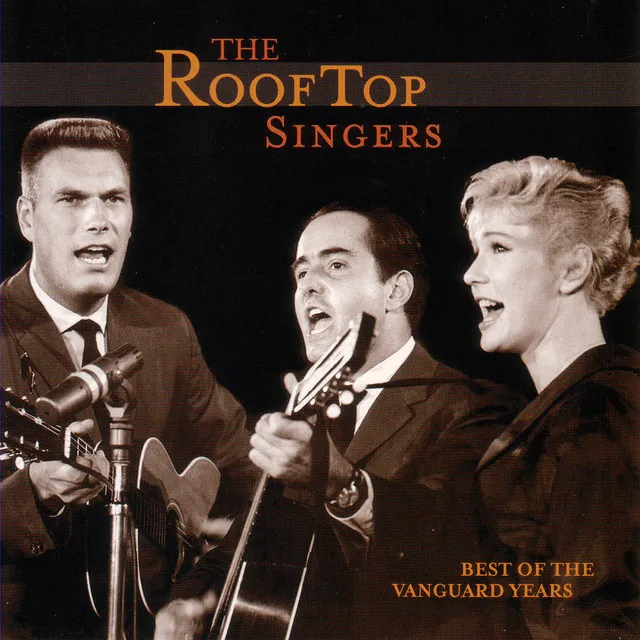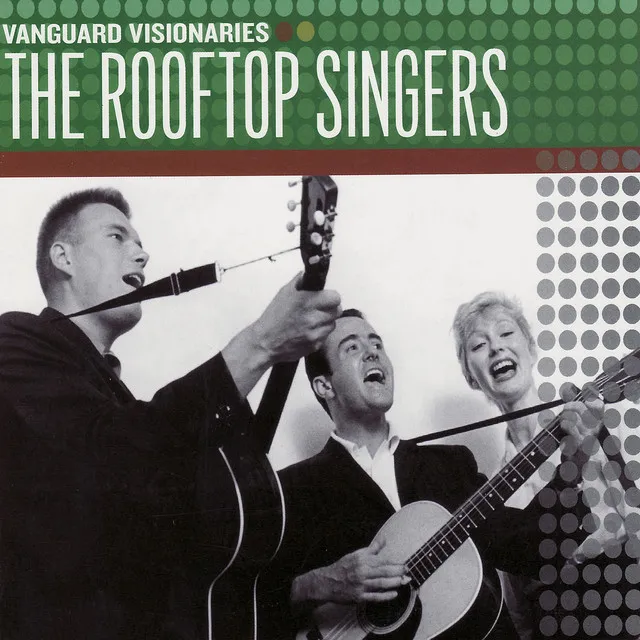The Rooftop Singers were the most successful of the folk revival's one-hit wonders -- their single major chart entry, "Walk Right In," was a number one record and also the biggest-selling single in the history of their label, Vanguard Records. The group was a trio consisting of Erik Darling, Bill Svanoe, and Lynne Taylor, formed in late 1962. Darling had been Pete Seeger's successor in the Weavers from 1958 through 1962, and had previously worked as a member of a jazz-folk influenced trio, the Tarriers, who had a modest hit with "Banana Boat Song." He had also appeared on dozens of recordings (mostly on Vanguard, to which the Weavers were signed) by other artists during the late '50s and early '60s as a guitar accompanist, and had released his own solo album.
It was sometime after exiting the Weavers in June of 1962 that Darling chanced to hear "Walk Right In," a ragtime-style number originally recorded by Gus Cannon & His Jug Stompers in 1929. In a move that was more akin to the pop music industry than to the folk revival -- but which paid commensurately huge dividends -- Darling decided to put together a group to record the song; knowing what he needed to make the song work, and what he visualized as potential follow-up material, Darling was able to put together exactly the group that he wanted. He brought in Bill Svanoe, a former fine arts major and economics student who had turned to playing guitar and singing full-time. And Lynne Taylor was a veteran jazz singer who had been working in East Coast nightclubs since her teens. She had appeared on bills with Frank Sinatra, Sophie Tucker, and Martin & Lewis, and had played the Village Vanguard in New York for 28 weeks, later singing with Benny Goodman and Buddy Rich's band.
The trio cut "Walk Right In" for Vanguard in 1963, in a version with updated lyrics and a new arrangement featuring paired 12-string acoustic guitars. The record reached the number one spot later that year and yielded an album of the same title. Although they were part of the folk revival, which was running full steam at the time, the Rooftop Singers differed markedly from the Weavers and most of the popular folk trios of the era in several important respects. The first was that they were a mixed group, a woman and two men, as distinct from the all-male contingents that were common. They were also far more influenced by blues, ragtime, and songster material, as well as being less profoundly earnest in their political sensibilities. Taylor's singing showed more of a jazz influence than was usual, while Darling and Svanoe's guitar playing showed higher than average dexterity.
The Rooftop Singers played the Newport Folk Festival in 1963, but their popularity only lasted about a year. They had come along just as the folk music boom crested, and by the end of 1963 was ready to recede -- they were soon supplanted by more raw-sounding and confrontational solo artists such as Bob Dylan, Phil Ochs, and Tom Rush; more pop-oriented outfits such as the Seekers and the We Five; and folk-rock bands like the Byrds, the Beau Brummels, and the early Jefferson Airplane. The trio released further singles, including "Tom Cat" -- which lost much of its momentum when some radio stations banned it for comparatively suggestive lyrics -- and "Mama Don't Allow," and a pair of albums, Goodtime and Rainy River. Lynne Taylor exited in 1966 and was replaced by Mindy Stuart, who wasn't as bold or inventive a musical personality. Patricia Street succeeded Stuart, and she soon started composing songs with Darling, which became part of the group's third album. The two continued to write songs together after the breakup of the Rooftop Singers in 1967, and they worked together on Darling's 1975 album, The Possible Dream on Vanguard. Darling was still recording new material into the 21st century, including songs co-authored with Street; he died of lymphoma on August 3, 2008. ~ Bruce Eder, Rovi




